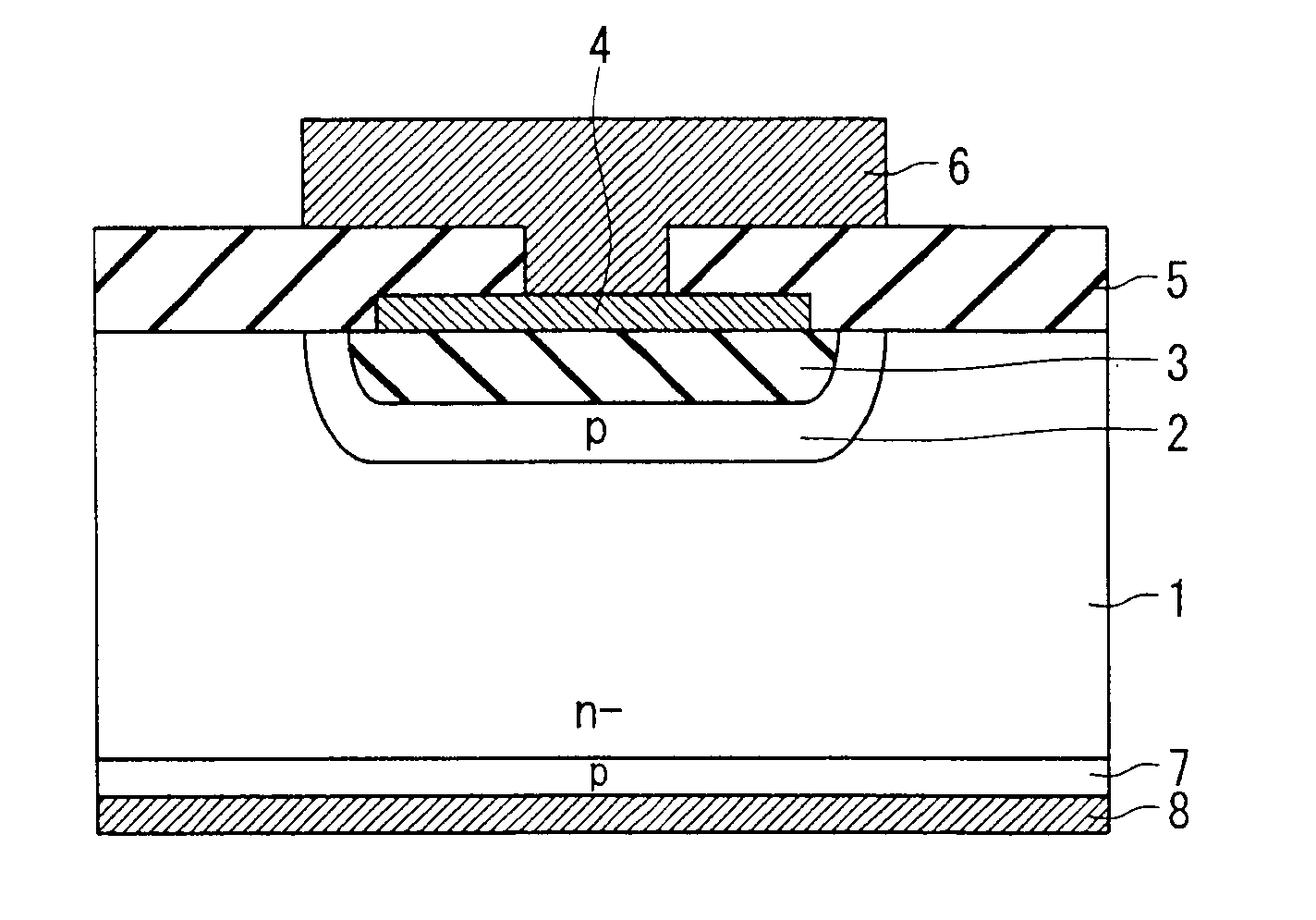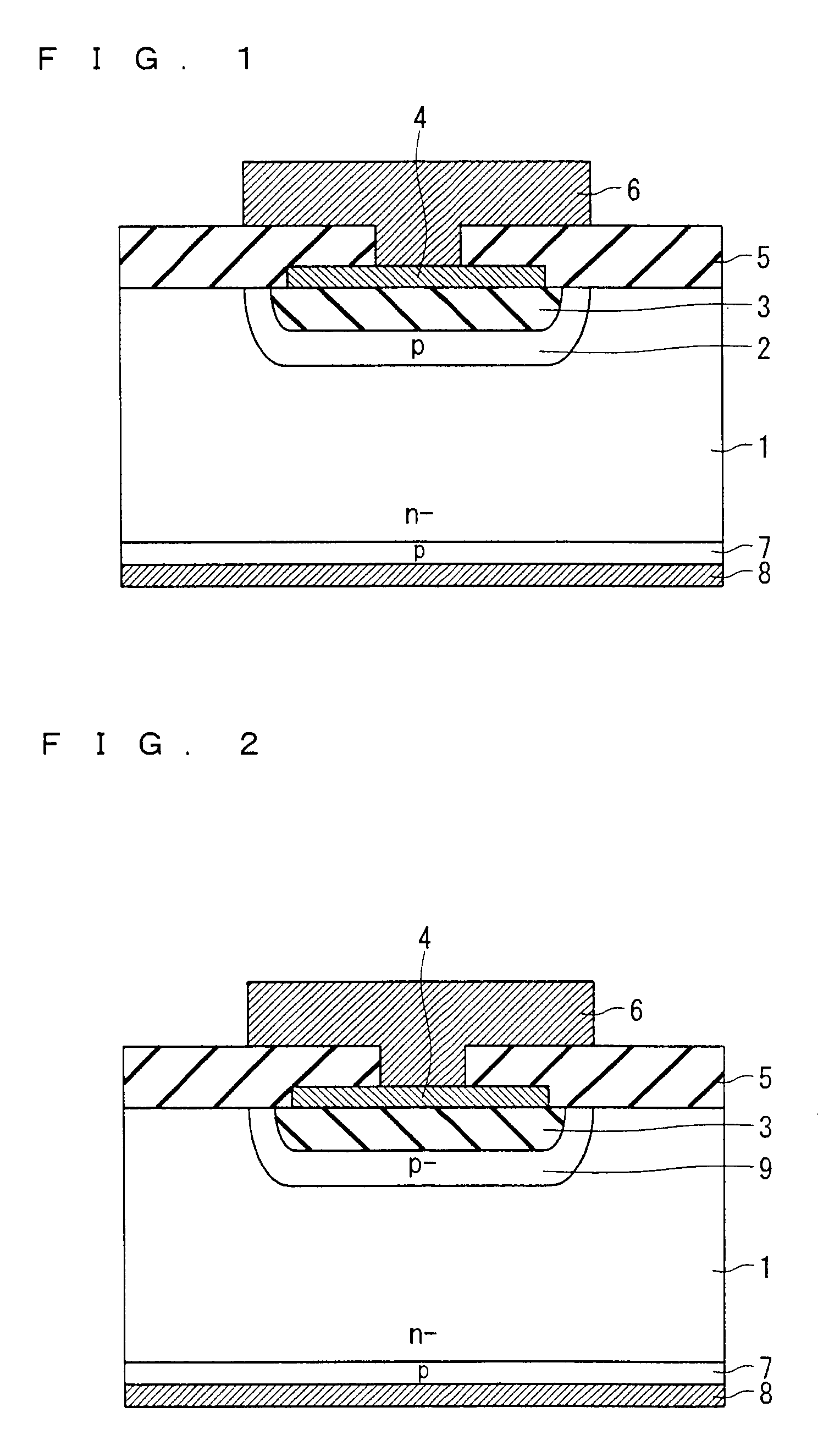Power semiconductor device
a technology of semiconductor devices and semiconductors, applied in semiconductor devices, semiconductor/solid-state device details, diodes, etc., can solve the problems of uneven thickness of film, difficult to ensure the focus margin in photolithography, and large film thickness, so as to reduce the unevenness of thickness and reduce the unevenness of characteristics
- Summary
- Abstract
- Description
- Claims
- Application Information
AI Technical Summary
Benefits of technology
Problems solved by technology
Method used
Image
Examples
first preferred embodiment
[0031]FIG. 1 is a cross-sectional view showing a configuration of a gate wiring region of a power semiconductor device according to a first preferred embodiment of the present invention. Note that the power semiconductor device according to this preferred embodiment is provided in accordance with a typical chip layout as shown in, for example, FIG. 8, which has a termination region 11 (termination structure) in which a field plate is provided on an insulating film filled in a recessed region (first recessed region) formed in a semiconductor substrate as shown in FIG. 10, and includes a plurality of transistor cell regions 10 (unit cells) connected in parallel. The gate wiring electrically connected to respective gate electrodes of the plurality of transistor cell regions 10 are disposed in a gate wiring region 12, and a gate pad 13 (gate pad region) is electrically connected to the gate wiring region 12.
[0032]As shown in FIG. 1, in the gate wiring region of the power semiconductor d...
second preferred embodiment
[0036]FIG. 2 is a cross-sectional view showing a configuration of a gate wiring region of a power semiconductor device according to a second preferred embodiment of the present invention. As shown in FIG. 2, the second preferred embodiment of the present invention is characterized in that a p-type well region 9 (second impurity region) of low impurity concentration that is formed by ion implantation in which an implantation amount is approximately 1.0E12 atoms / cm2 is provided under the recessed region (second recessed region) formed in the n-type silicon semiconductor substrate 1. Other configuration is similar to that of the first preferred embodiment, and thus description thereof is omitted here.
[0037]In a case where the termination structure is the RESURF structure, a p-type RESURF layer (first impurity region) formed by ion implantation in which an implantation amount is approximately 1.0E12 atoms / cm2 is formed under the recessed region (first recessed region) of the termination...
third preferred embodiment
[0039]A third preferred embodiment of the present invention is characterized in that the Al—Si electrode 6 (gate pad region) is disposed above the insulating film 3 filled in a recessed region (third recessed region) formed in the n-type silicon semiconductor substrate 1 (semiconductor substrate).
[0040]FIG. 4 is a cross-sectional view showing a configuration of a gate pad of a conventional power semiconductor device. As shown in FIG. 4, conventionally, the Al—Si electrode 6 (gate pad region) is disposed on the n-type silicon semiconductor substrate 1 through the insulating film 3 and the interlayer film 5. On the Al—Si electrode 6, the gate pad is electrically connected to a gate drive circuit by wire bonding or the like. Conventionally, the thickness of an insulating film formed on the n-type silicon semiconductor substrate 1 is a sum of the thickness of the insulating film 3 and the thickness of the interlayer film 5 as described above, which causes a problem that a step due to th...
PUM
| Property | Measurement | Unit |
|---|---|---|
| thickness | aaaaa | aaaaa |
| thickness | aaaaa | aaaaa |
| concentration | aaaaa | aaaaa |
Abstract
Description
Claims
Application Information
 Login to View More
Login to View More - R&D
- Intellectual Property
- Life Sciences
- Materials
- Tech Scout
- Unparalleled Data Quality
- Higher Quality Content
- 60% Fewer Hallucinations
Browse by: Latest US Patents, China's latest patents, Technical Efficacy Thesaurus, Application Domain, Technology Topic, Popular Technical Reports.
© 2025 PatSnap. All rights reserved.Legal|Privacy policy|Modern Slavery Act Transparency Statement|Sitemap|About US| Contact US: help@patsnap.com



